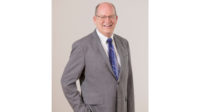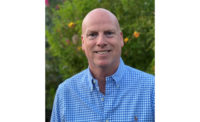Every successful project starts with a framework. A vision statement. A blueprint. The editors of Engineered Systems are proud to present The Blueprint — a monthly Q&A interview with HVACR engineering’s leading voices. These one-on-one discussions will examine the trade’s history, current industry trends, the factors shaping the sector’s future, and more.
enVerid Systems is a provider of sustainable indoor air quality (IAQ) solutions. The company’s sorbent-based air cleaners are designed to help buildings achieve air quality goals, save money, and reduce energy consumption and carbon emissions. EnVerid’s flagship HVAC Load Reduction modules are deployed in commercial, academic, and government buildings globally.
Christian Weeks, CEO, enVerid, discusses the decarbonization movement, introduces us to the company’s “Clean First” approach, defines the effectiveness of sorbent filtration technologies, and much more in the latest installment of the Blueprint.
Engineered Systems: Please take a moment to introduce yourself.
Weeks: I’m Christian Weeks, CEO of enVerid Systems. Prior to joining enVerid, I worked for more than a decade in the energy efficiency field, delivering energy savings for commercial and institutional customers.
Engineered Systems: enVerid addresses the dual priorities of indoor air quality and building decarbonization through its innovations. Let’s start with IAQ, what stands out for you as the most important lesson learned from Covid-19?
Weeks: A key lesson from the COVID-19 pandemic is that just relying on outside air to deliver healthy, safe IAQ is very energy-intensive. As buildings increased their ventilation rates, their energy usage also went way up, which obviously doesn’t help with decarbonization goals. The second and related lesson is that layered mitigation strategies that combine filtration and outside air ventilation can be as effective at reducing risk, more feasible technically, and more efficient environmentally than just relying on outside air. This insight is important because it provides a pathway to achieve good IAQ in an efficient manner going forward, especially when outside air is not “fresh.”
In the early days of the pandemic, ASHRAE and other guidance focused on maximizing outside air to decrease the risk of airborne transmission. This initial guidance was very conservative without consideration for cost as well as operational and seasonal weather impacts. Concerns about surging energy usage were voiced immediately. This pushback led ASHRAE and others to evaluate the combined effectiveness of filtration and ventilation as an alternative to relying only on outside air to reduce airborne transmission. And, as it turns out, combining ventilation and filtration is very effective and more energy efficient. As Bill Bahnfleth, chair of ASHRAE’s Epidemic Taskforce, said during a webinar in October of 2020, “The ongoing assessment of the guidance, including consideration of equivalent outdoor air approaches, has led ASHRAE to conclude that high-efficiency filtration can be as effective and lower cost than ventilation and often more feasible technically.”
Based on this insight, in January 2021, ASHRAE announced new COVID-19 guidance based on the concept that “ventilation, filtration, and air cleaners can be combined flexibly to achieve exposure reduction goals.” Updated in October 2021, ASHRAE’s core recommendations advise at least minimum outdoor airflow rates for ventilation and a combination of filters and air cleaners that achieve MERV 13 or better levels of performance for recirculated air. According to this latest guidance, designers and building operators should select control options that “provide desired exposure reduction while minimizing associated energy penalties.”
So, the most important lesson from COVID-19 as it relates to IAQ and building decarbonization is that mechanical filtration and air cleaners that target specific contaminant classes can substitute for higher volumes of outside air to achieve good indoor air quality energy efficiently.
Engineered Systems: How do those of us in the HVAC industry need to apply these lessons to this new normal of broader appreciation of healthy IAQ and mounting pressure to meet ESG goals?
Weeks: While the pandemic raged, we were also ravaged by unprecedented climate-related disasters, including wildfires, droughts, and extreme weather. Given that the building sector is responsible for 40% of global carbon emissions, and HVAC accounts for 36% of commercial building energy intensity, there is now broad recognition that building decarbonization and resilience must be addressed alongside improved IAQ. The question is how to we improve IAQ in an energy efficient manner? This takes us back to your first question and the lessons from the pandemic.
Taking a page from ASHRAE’s latest COVID-19 guidance, enVerid has developed a framework that breaks the old paradigm that the only solution to pollution is dilution. Instead, using a “Clean First” approach, we can achieve sustainable IAQ — better, more efficient IAQ with increased resilience.
There are four steps in enVerid’s Clean First framework to achieve Sustainable IAQ:
- Step 1: Define IAQ Goals — Going forward, we expect many more buildings will adopt IAQ goals based on guidelines from LEED, WELL, the Harvard School of Public Health, and other experts. These goals may be stated in terms of carbon dioxide (CO2), volatile organic compounds (VOCs), or particulate matter (PM) levels as well as humidity.
- Step 2: Maximize Air Cleaning for Recirculated Air — Once IAQ goals have been set, the next step is to design the most energy-efficient way to achieve the goals. As we saw with COVID-19, filtering indoor air is often more efficient than conditioning outside air, so maximizing air cleaning is Step No. 2. The key is to use proven air cleaning for particulate matter and bioaerosols, such as high-MERV filters and proven solutions for gaseous contaminants (CO2, VOCs, ozone), such as sorbent-based filtration.
- Step 3: Determine Outside Air Requirements — Once we have maximized efficient air cleaning, Step No. 3 is to calculate outside air requirements accounting for the benefits of air cleaning. This can be done using ASHRAE’s IAQ Procedure within Standard 62.1, which may be used to calculate minimum ventilation rates accounting for the effectiveness of air cleaning systems. Recent updates to the ASHRAE 62.1 user’s manual and new IAQ Procedure (IAQP) calculator tools make applying the IAQP very simple.
- Step 4: Validate, Monitor, and Control IAQ — IAQ design strategies should be field-validated to confirm design targets are achieved in operation. We also recommend ongoing IAQ monitoring to give building operators the ability to adapt to changing air quality both inside and outside, which will become increasingly important during wildfire season. Ideally, IAQ monitoring is integrated with building control systems to automate and optimize air cleaning and outside air ventilation for resiliency and efficiency.
This Clean First approach is how we will achieve low-energy, high-performance, high-resilience buildings in our new normal.
Engineered Systems: Are there tools or models that might be helpful for engineers to illustrate this approach?

Weeks: Earlier in the pandemic enVerid developed an open source COVID-19 Energy Estimator tool with Dr. Marwa Zaatari, a member of ASHRAE’s Epidemic Task Force Commercial Buildings Subcommittee. The Energy Estimator is meant to be used to compare the risk, cost, energy use, and carbon impacts of various HVAC strategies for mitigating airborne transmission of COVID-19, but it can also be used post-pandemic to weigh different Clean First strategies to achieve sustainable IAQ.
The tool shows the risk reduction benefits of increasing outside air ventilation when you already have high-efficiency MERV filters is low, but the costs and carbon impacts of increasing outside air ventilation are significant. For example, by applying the Energy Estimator to a low-rise office building in metro-Boston, we saw minimum outside air per Standard 62.1 combined with high-efficiency particle filters for COVID-19 mitigation and sorbent filters for gaseous contaminants delivers comparable equivalent air changes as an increased ventilation scenario (5.25 vs. 5.45 equivalent ACH) at less than half the annual operating cost ($121k vs. $255k) and annual carbon emissions (98 vs. 324 metric tons).
Engineered Systems: So, the key to achieving Sustainable IAQ is combining high-efficiency MERV filters for particles and bioaerosols with sorbent filters for gases and then supplementing with just enough outside air to achieve IAQ goals and maintain building pressure. Tell us more about enVerid’s sorbent filtration technologies and how it is being used to deliver good indoor air quality more energy efficiently.
Weeks: Sorbents are a well-established air-cleaning technology. For decades, they have been used in spaceships and submarines to maintain good IAQ without any outside air. Recently published field studies by the National Renewable Energy Lab and the utility ComEd have confirmed the suitability of sorbent filtration in buildings to clean indoor air at a molecular level so that the outside air requirements can be safely lowered under existing buildings codes. Based on these studies, the General Services Administration of the federal government recently approved the use of sorbent air cleaning in their buildings to improve IAQ and energy efficiency.
EnVerid is one of the leading developers of sorbent filtration for commercial buildings. EnVerid’s Sorbent Ventilation TechnologyTM (SVT) is specially engineered to be very efficient at capturing carbon dioxide and formaldehyde from indoor air along with all the other contaminants necessary to replace outdoor air with cleaned indoor air under existing ventilation codes. Carbon dioxide and formaldehyde are noteworthy because they are the twin pillars of IAQ management in commercial buildings. Other advantages of enVerid’s SVT are that it is very low maintenance (filters last two years), and it produces no byproducts, making it extremely safe. SVT can also be used to earn up to six points under LEED’s performance-based indoor air quality design and assessment pilot credit.
SVT can be installed in buildings as part of enVerid’s line of award winning HVAC Load Reduction (HLR) modules or an applied airside system from Daikin Applied. In fact, late last year, Daikin introduced the upgraded Rebel Applied™ with enVerid SVT, a packaged, total-air-quality system that combines the benefits of sorbent media with a configurable rooftop unit to maximize clean air changes and lower energy costs.
Engineered Systems: As we wrap up, what advice do you have for engineers designing new buildings or retrofits?
Weeks: To address the dual challenges of the pandemic and climate change, we need to be open to new ways to achieve healthy, safe, energy-efficient IAQ. Combining filtration and ventilation using the concept of equivalent air changes is the key to low-energy, high-IAQ buildings of the future.
My advice to engineers designing new buildings and HVAC replacement projects is to embrace these lessons learned from the pandemic and to embrace proven technologies to help us respond to the growing demand for better IAQ and more efficient and resilient buildings. Many solutions exist and are proven, like sorbent air cleaning, but applying them may require different methods, such as using the IAQ Procedure with air cleaning rather than the more familiar Ventilation Rate Procedure to calculate minimum ventilation rates. We need to embrace these newer technologies and methods if we are to achieve Sustainable IAQ. Our personal health and the health of the planet depend on it.
Engineered Systems: Christian, thank you so much for sharing your expertise. If those reading this article are interested in learning more about enVerid, where should they turn?
Weeks: For more information, please visit https://enverid.com.





